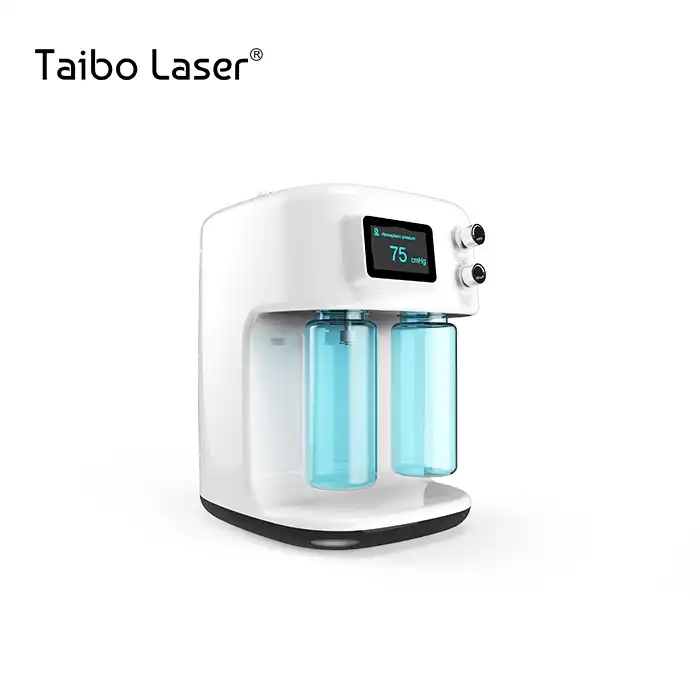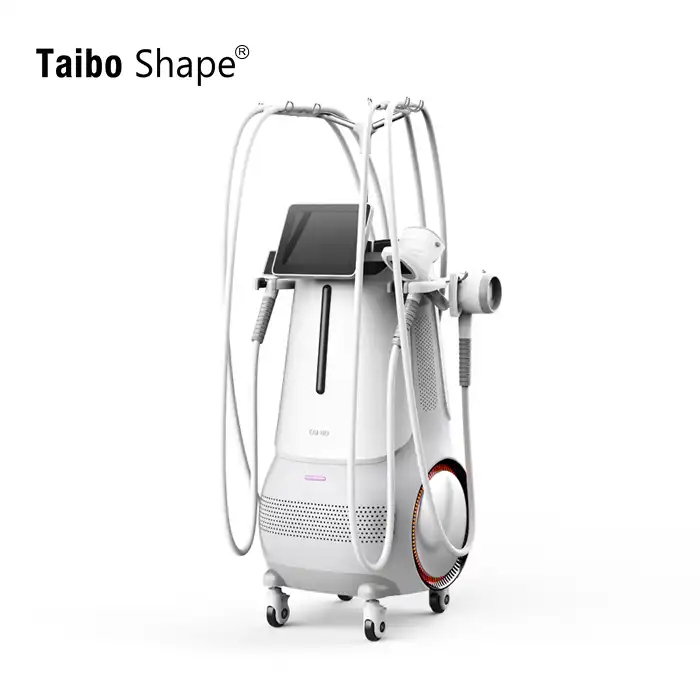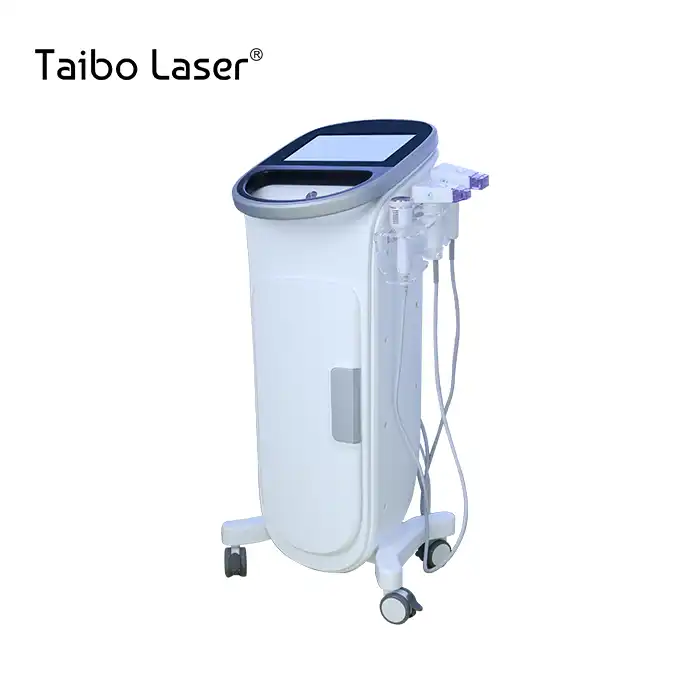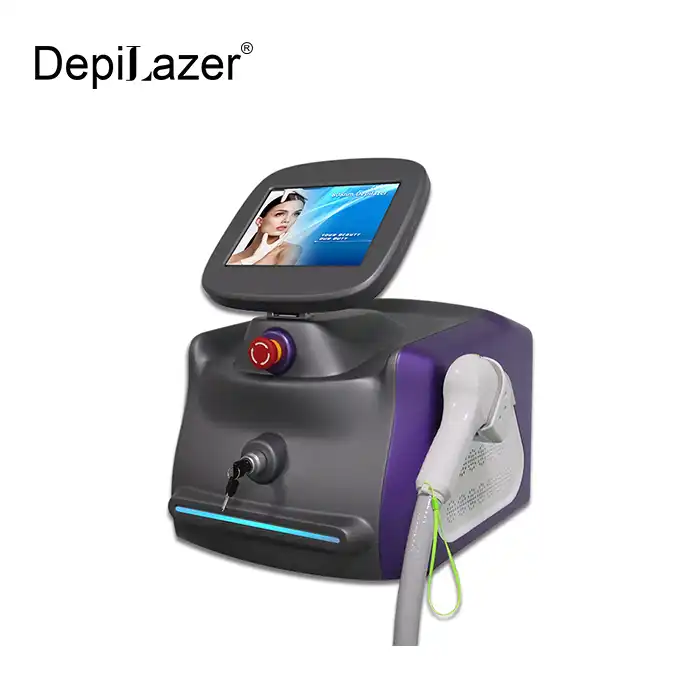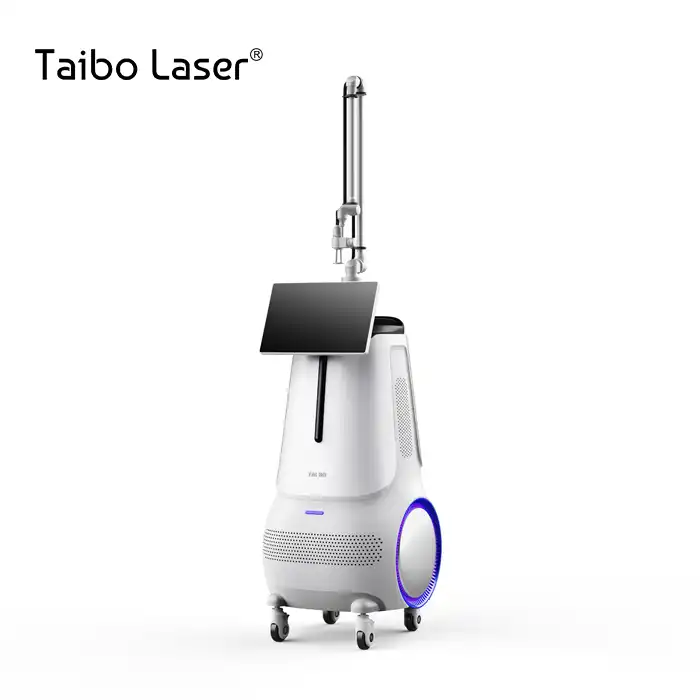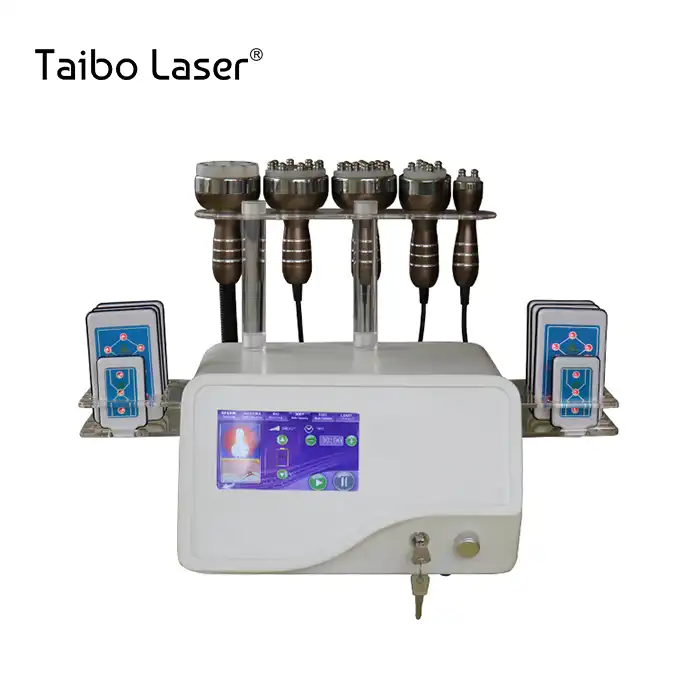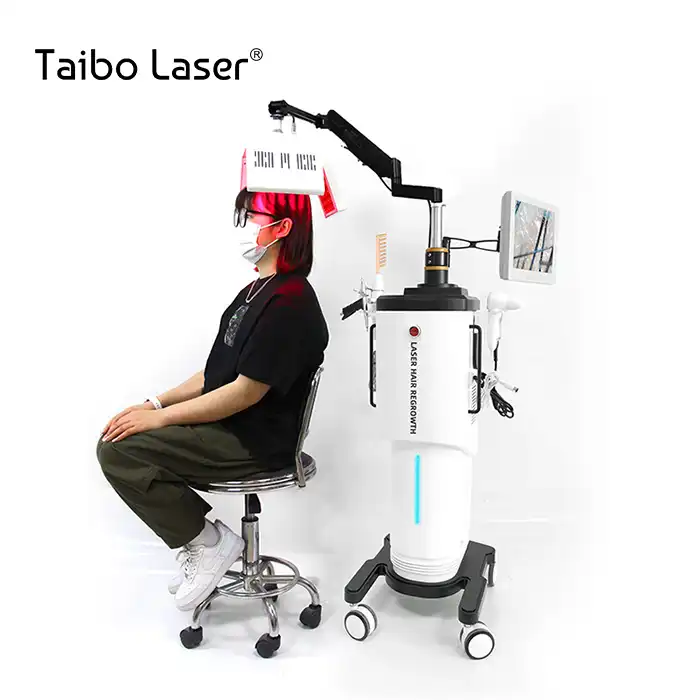
How Picosecond Q Switch Laser Boosts Tattoo Removal Efficiency?
2025-09-09 09:03:49
The advancement of laser technology has revolutionized tattoo removal procedures, with picosecond q switch laser systems emerging as the gold standard for efficient ink elimination. This cutting-edge technology significantly enhances removal effectiveness by delivering ultra-short pulse durations that precisely target tattoo pigments while minimizing thermal damage to surrounding tissue. Picosecond lasers operate at one trillionth of a second and deliver heat radiation more efficiently to the target area, making them substantially more effective than traditional nanosecond systems for fragmenting tattoo particles and achieving superior clinical outcomes.
Advanced Pulse Technology Mechanisms
Ultra-Short Pulse Duration Benefits
The revolutionary picosecond q switch laser technology operates with pulse widths of approximately 350 picoseconds, representing a dramatic improvement over conventional nanosecond systems. This ultra-short duration allows the laser energy to interact with tattoo pigments during their thermal relaxation time, creating photomechanical effects rather than purely thermal ones. The picosecond duration ensures that energy is delivered faster than heat can dissipate from the target chromophore, resulting in more efficient pigment fragmentation. When tattoo pigments absorb this concentrated energy within such brief timeframes, they experience rapid expansion and contraction cycles that effectively shatter the ink particles into microscopic fragments. These smaller particles are then more readily eliminated by the body's lymphatic system, leading to faster clearance rates and reduced treatment sessions compared to traditional laser systems. The military-grade Q-switched technology incorporated into modern picosecond systems further enhances this mechanism by creating extremely high peak powers while maintaining low average power output. This combination allows for maximum pigment disruption while minimizing thermal damage to surrounding healthy tissue. The precise control over pulse duration and energy delivery makes picosecond q switch laser systems particularly effective for treating stubborn tattoo colors that were previously difficult to remove, including blues, greens, and multi-colored tattoos that require different wavelengths for optimal results.
Photomechanical vs. Thermal Effects
Traditional laser tattoo removal primarily relies on thermal mechanisms, where prolonged heat exposure causes pigment particles to break apart through thermal expansion. However, this approach often results in collateral thermal damage to surrounding tissues, leading to increased pain, longer healing times, and higher risks of scarring or hyperpigmentation. The picosecond q switch laser technology fundamentally changes this paradigm by utilizing photomechanical effects as the primary mechanism of action. The photomechanical process occurs when the laser's ultra-short pulses create intense pressure waves within the tattoo pigments, causing them to fracture through mechanical stress rather than thermal heating. Several studies have concluded that picosecond pulses are more efficient than nanosecond pulses at tattoo particle fragmentation. This mechanical disruption is significantly more efficient at breaking pigment particles into smaller fragments, often reducing particles to sizes less than 100 nanometers compared to the larger fragments produced by thermal methods. The reduced thermal component in picosecond treatments translates directly into improved patient comfort and faster healing times. Patients typically experience less pain during treatment sessions and show reduced post-treatment erythema and swelling. The minimal thermal damage also significantly reduces the risk of adverse effects such as hyperpigmentation, hypopigmentation, or scarring, making picosecond q switch laser systems suitable for patients with darker skin types who may be at higher risk for pigmentation changes with traditional thermal-based treatments.
Wavelength Optimization and Selectivity
Modern picosecond q switch laser systems incorporate multiple wavelengths to address the diverse spectrum of tattoo ink colors effectively. The most commonly used wavelengths include 1064nm for black and dark blue pigments, 532nm for red and orange colors, and 755nm for blue and green inks. Each wavelength is specifically chosen based on the absorption characteristics of different tattoo pigments, ensuring maximum energy absorption by the target chromophores while minimizing absorption by surrounding melanin and hemoglobin. The 1064nm wavelength penetrates deeper into the skin and is particularly effective for black ink removal, as these pigments strongly absorb near-infrared light. This wavelength also has reduced melanin absorption, making it safer for patients with darker skin types. The 532nm wavelength targets red and warm-colored pigments effectively but requires careful consideration of the patient's skin type due to higher melanin absorption. The 755nm wavelength fills the gap for treating blue and green pigments that are poorly absorbed by both 1064nm and 532nm wavelengths. The ability to switch between wavelengths during treatment sessions allows practitioners to customize treatment protocols for individual tattoos, addressing multiple colors in a single session. This versatility of picosecond q switch laser systems significantly reduces the total number of treatment sessions required and improves overall treatment efficiency. Advanced systems can deliver energies up to 2000mJ across these wavelengths, providing sufficient power to fragment even densely packed professional tattoo inks while maintaining the ultra-short pulse duration that defines picosecond technology.
Enhanced Pigment Fragmentation Process
Molecular-Level Ink Disruption
The enhanced effectiveness of picosecond q switch laser systems stems from their ability to fragment tattoo pigments at the molecular level through precise photomechanical disruption. When the ultra-short laser pulses interact with tattoo ink particles, they create rapid thermal expansion within the pigment structure that occurs faster than thermal diffusion can dissipate the energy. This creates intense mechanical stress that causes the pigment particles to fracture along their weakest structural points, often resulting in fragmentation into particles smaller than 10 nanometers. Picosecond lasers transmit light pulse lengths that are closer to the thermal relaxation time of tattoo pigment molecules, therefore they can deliver heat radiation more efficiently. This precise timing ensures that energy is deposited within the pigment before it can be conducted away to surrounding tissues. The result is highly selective destruction of tattoo pigments with minimal collateral damage to healthy skin structures such as collagen fibers, blood vessels, and melanocytes. The molecular-level disruption achieved by picosecond q switch laser technology is particularly evident when treating professional tattoos that contain densely packed, large pigment particles. These challenging cases often require numerous treatment sessions with conventional nanosecond lasers due to incomplete fragmentation. However, picosecond systems can break these stubborn pigments into fragments small enough for efficient phagocytosis and lymphatic clearance, often reducing treatment requirements by 30-50% compared to traditional methods.
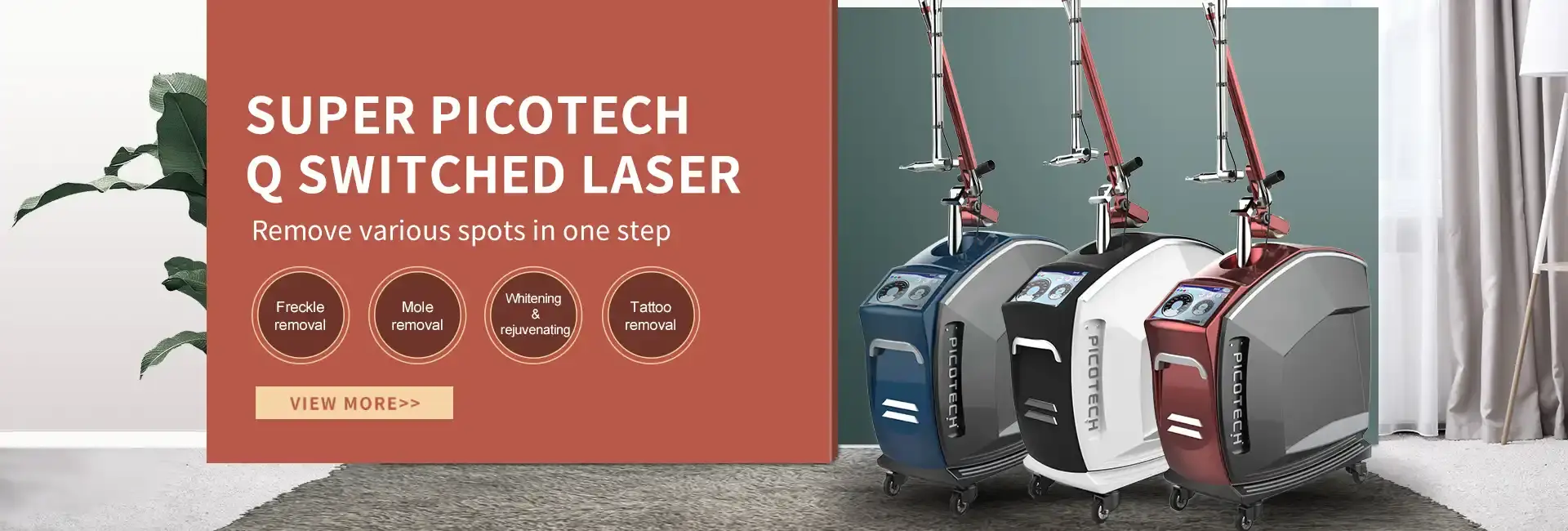
Improved Lymphatic Clearance
The smaller particle sizes achieved through picosecond fragmentation dramatically improve the efficiency of natural clearance mechanisms. The lymphatic system, which is responsible for removing foreign particles from the dermis, functions most effectively when dealing with particles smaller than 100 nanometers. Traditional nanosecond lasers often create fragments in the 200-500 nanometer range, which approach the upper limits of efficient lymphatic clearance and may require multiple fragmentation cycles to achieve complete removal. Picosecond q switch laser systems consistently produce fragments in the optimal size range for lymphatic processing, typically between 10-70 nanometers. These microscopic particles are readily engulfed by tissue macrophages and transported through lymphatic vessels to regional lymph nodes, where they are processed and eliminated from the body. The improved clearance efficiency translates directly into faster fading between treatment sessions and reduced total treatment time. Clinical studies have demonstrated that patients treated with picosecond systems show superior clearance rates compared to those treated with nanosecond technology, particularly for challenging ink colors such as blue and green pigments. The enhanced lymphatic clearance also reduces the accumulation of partially fragmented pigments in the treatment area, which can sometimes create a "ghosting" effect in conventional laser treatments where faint remnants of the tattoo remain visible even after multiple sessions.
Multi-Color Treatment Capabilities
One of the most significant advantages of modern picosecond q switch laser systems is their ability to address multi-colored tattoos effectively within single treatment sessions. The availability of multiple wavelengths (532nm, 755nm, and 1064nm) allows practitioners to target different ink colors sequentially during one appointment, dramatically improving treatment efficiency and reducing the total number of visits required for complete tattoo removal. The 532nm wavelength effectively targets red, orange, and yellow pigments through strong absorption in these chromophores. When combined with appropriate energy settings and spot sizes, this wavelength can achieve excellent clearance of warm-colored inks while minimizing risk to surrounding melanin-containing structures. The 1064nm wavelength serves as the workhorse for black and dark blue pigments, penetrating deeply into the dermis to reach ink deposits at various depths within the skin. The 755nm wavelength addresses the historically challenging blue and green pigments that showed poor response to traditional laser systems. These colors often required alternative laser types or remained resistant to treatment entirely. The picosecond q switch laser technology, when operated at 755nm, can effectively fragment these stubborn pigments through optimized energy delivery that matches their specific absorption characteristics. This comprehensive wavelength coverage means that complex, multi-colored tattoos can be treated systematically and efficiently, with each color component receiving optimal energy delivery for maximum fragmentation and clearance.
Superior Treatment Efficiency and Safety
Reduced Session Requirements
The enhanced pigment fragmentation capabilities of picosecond q switch laser systems translate directly into reduced treatment session requirements, offering significant advantages for both patients and practitioners. Clinical experience shows that picosecond lasers may reduce treatment sessions from 7-8 sessions to approximately 6 sessions for comparable results. This reduction becomes even more pronounced when treating amateur tattoos or certain professional tattoos with favorable characteristics such as superficial placement and responsive ink formulations. The efficiency gains stem from the superior fragmentation achieved during each treatment session. While nanosecond systems typically fragment pigments into particles that require multiple treatment cycles to reach optimal clearance sizes, picosecond systems often achieve this optimal fragmentation in fewer passes. This means that each treatment session produces more significant visible improvement, allowing for longer intervals between sessions and faster overall completion times. Professional tattoos, which traditionally required 8-12 sessions with conventional lasers, often show complete or near-complete clearance within 4-6 picosecond treatments. Amateur tattoos, which contain fewer and less densely packed pigments, may require only 2-4 sessions for complete removal. The reduced session requirements not only improve patient satisfaction but also reduce the overall cost of treatment when calculated on a per-tattoo basis, despite the higher per-session costs associated with advanced picosecond technology.
Enhanced Safety Profile
The superior safety profile of picosecond q switch laser systems represents one of their most compelling advantages over traditional nanosecond technology. The reduced thermal component inherent in photomechanical fragmentation significantly minimizes the risk of thermal injury to surrounding tissues. This improved safety profile manifests in multiple ways, including reduced post-treatment pain, faster healing times, and lower incidence of adverse effects such as scarring, hyperpigmentation, or hypopigmentation. The ability to limit damage precisely to the pigment target gives greater efficacy in treatment of epidermal lesions with less induction of post-inflammatory hyperpigmentation in PIH-susceptible Asian skin. This precision is particularly beneficial for patients with darker skin types (Fitzpatrick types IV-VI) who are at higher risk for pigmentation changes following laser treatments. The reduced thermal damage associated with picosecond pulses makes these systems suitable for a broader range of patients, including those who may not have been good candidates for traditional laser tattoo removal. The enhanced safety profile also extends to reduced downtime following treatment sessions. Patients typically experience minimal swelling and erythema, with most returning to normal activities within 24-48 hours. The reduced tissue trauma also means that longer intervals between sessions are not necessary for tissue recovery, allowing for optimal treatment scheduling based on pigment clearance rather than healing requirements. This improved safety profile, combined with the enhanced efficacy, makes picosecond q switch laser systems the preferred choice for both patients and practitioners seeking optimal outcomes with minimal risk.
Minimal Thermal Damage
The fundamental advantage of picosecond q switch laser technology lies in its ability to minimize thermal damage while maximizing treatment effectiveness. Traditional nanosecond systems rely heavily on thermal mechanisms for pigment destruction, which inevitably results in collateral heating of surrounding tissues. This thermal damage contributes to post-treatment complications including prolonged erythema, blistering, scarring, and pigmentation changes. Picosecond systems achieve pigment fragmentation through predominantly photomechanical rather than thermal mechanisms. The ultra-short pulse duration prevents significant heat accumulation in surrounding tissues, as the energy is absorbed and utilized for mechanical disruption before thermal diffusion can spread heat beyond the target chromophore. This selective targeting preserves the integrity of important skin structures including collagen matrices, blood vessels, and nerve endings. The reduced thermal damage translates into improved patient comfort during and after treatments. Patients report significantly less pain during picosecond treatments compared to nanosecond alternatives, often describing the sensation as more tolerable and requiring less topical anesthesia. Post-treatment recovery is markedly faster, with less pronounced inflammatory responses and quicker resolution of treatment-related side effects. The preservation of surrounding tissue integrity also contributes to better aesthetic outcomes, with treated areas showing less textural changes and improved skin quality following complete tattoo clearance.
Conclusion
The picosecond q switch laser technology represents a revolutionary advancement in tattoo removal efficiency, offering superior pigment fragmentation through photomechanical mechanisms while minimizing thermal damage. This technology delivers faster treatment outcomes with fewer sessions, enhanced safety profiles, and improved patient satisfaction compared to traditional nanosecond systems. The precision and effectiveness of picosecond systems make them the preferred choice for modern tattoo removal practices.
Xi'an Taibo Laser Beauty Company stands at the forefront of this technological revolution as a leading China picosecond q switch laser manufacturer with over 15 years of expertise in Laser Beauty Equipment production. As a trusted China picosecond q switch laser supplier, we export our High Quality picosecond q switch laser systems to more than 180 countries worldwide. Our China picosecond q switch laser factory offers competitive picosecond q switch laser price points through our comprehensive China picosecond q switch laser wholesale programs, making advanced technology accessible to practitioners globally.
Whether you're seeking picosecond q switch laser for sale or comprehensive OEM/ODM solutions, our expert team provides two-year warranties, professional training, 24-hour online support, and customized services to meet your specific needs. With CE and ISO13485 certifications ensuring international quality standards, choosing Taibo Laser means partnering with innovation and reliability. Contact us today at susan@taibobeauty.com to discover how our advanced picosecond systems can transform your practice and deliver exceptional results for your clients.
References
1. Bernstein EF, Schomacker KT, Basilavecchio LD, Plugis JM, Bhawalkar JD. "Treatment of tattoos with a picosecond alexandrite laser: a prospective trial." Lasers in Surgery and Medicine, 2016.
2. Kossida T, Rigopoulos D, Katsambas A, Anderson RR. "Optimal tattoo removal in a single laser session based on the method of repeated exposures." Journal of the American Academy of Dermatology, 2012.
3. Saedi N, Metelitsa A, Petrell K, Arndt KA, Dover JS. "Treatment of tattoos with a picosecond laser: a prospective clinical and histopathologic study." Dermatologic Surgery, 2014.
4. Ross V, Naseef G, Lin G, Kelly M, Michaud N, Flotte TJ, Raythen J, Anderson RR. "Comparison of responses of tattoos to picosecond and nanosecond Q-switched neodymium: YAG lasers." Archives of Dermatology, 1998.
YOU MAY LIKE













